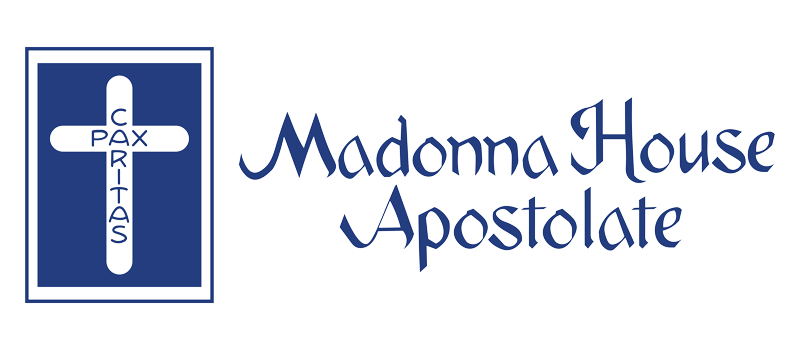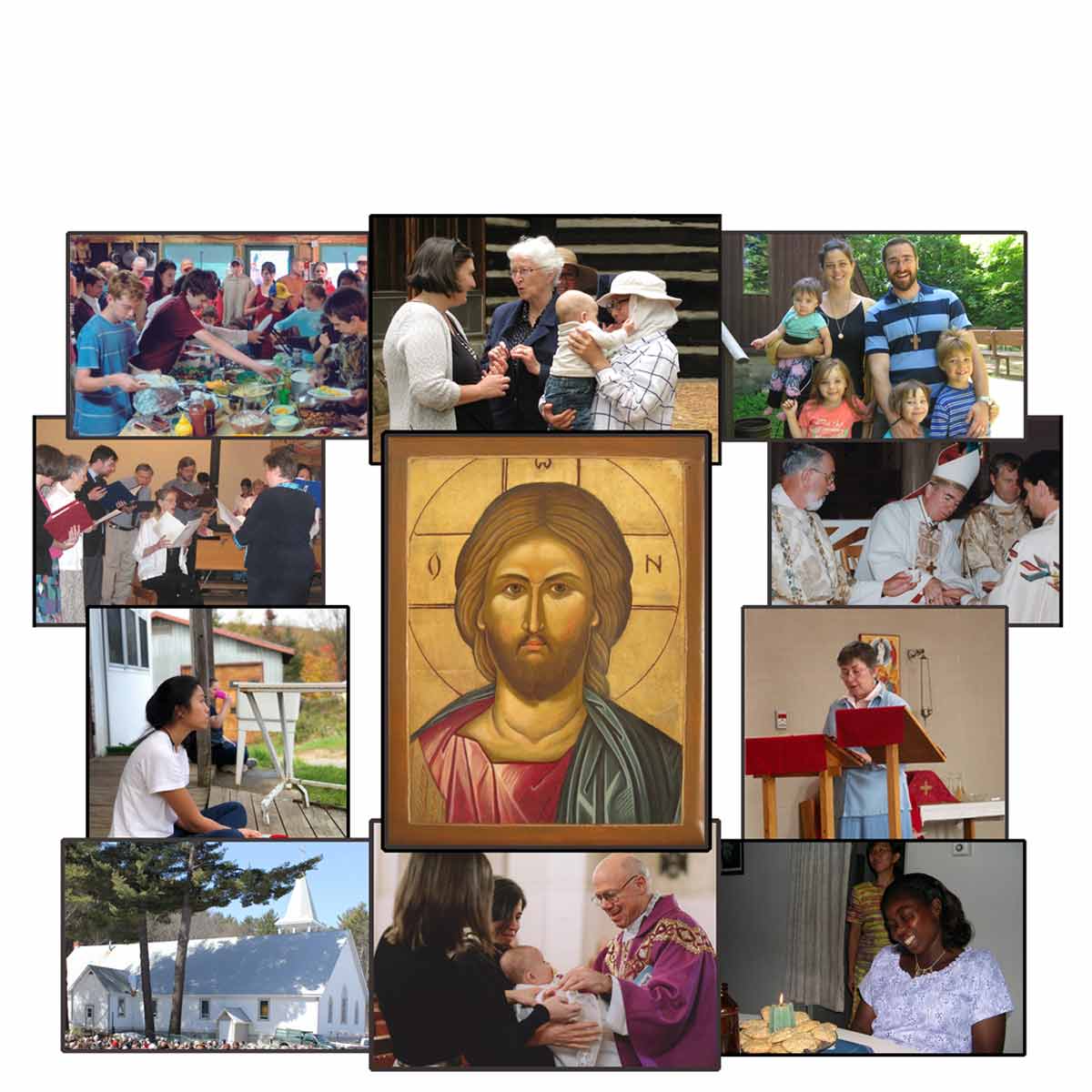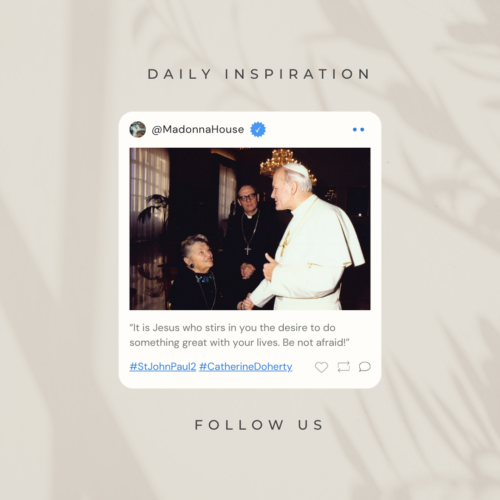This content has been archived. It may no longer be relevant
This article was in our newspaper before, not too long ago, but, well … I think when you read it, you will see why we are putting it in again at this time.
***
Who am I? If someone asks me that, what do I respond? I can say that I’m married with three kids or five kids, and I work in a bank or an auto-repair shop. (Well, I’m not and I don’t; I’m a member of Madonna House. But you get my point.)
Or that I’m a Canadian or a Korean or an American. These are the ways that we usually identify ourselves.
But these are passing things. Our kids will grow up, we will get another job and perhaps another spouse. We might even move to another country and eventually become a citizen there.
No, my real identity, that is, the only thing I will take with me when I die, is my baptism into Christ. Everything else is of this world and is therefore passing, temporary, ephemeral.
Who am I? I am a Catholic, a member of the Body of Christ.
I love the Church. Why? Someone else writing an article on this might give a more formal presentation from, say, the Catechism, on the various proofs and attributes of the Church, but my article is going to be from a more personal perspective.
I am going to talk about why I personally love the Church, about what it is about the Church that moves and elevates me and commands my loyalty and belief. Here is what I’ve come up with.
1) The Roman Catholic Church has been under the same management for 2000 years. What does this mean? To me it means that from the time of the Roman Empire to the present, the Church has been there.
It wasn’t just present or in existence. It didn’t just have branch offices in all the major cities: no, the Church was there among the people, embedded in their daily lives, in the midst of history as it was unfolding. The Church and civilization, especially western civilization, are completely and inextricably intertwined.
Throughout all those years, how many priests have known each member of their flock by name? How many of them have walked with them, listened to them, celebrated with them, consoled them, baptized them, married them and finally commended their souls to God? How many have suffered very much for their people?
How many confessions have been heard in the last two thousand years? A billion? Five billion? Each confession is a little story of human folly or darkness or sorrow or even wickedness, but the Church through her priests hears each story. I see this as a great store of wisdom that no other faith can possess.
In all of history, what other organization, institution, faith community—whatever—walked in this way with the people, poured itself out for the people, the humble no less than the great? The Church has “seen it all,” and she knows human nature.
I often think of the Church as having a great big front door through which millions, no, billions, have been passing over the centuries—in and out for Mass, confession, marriages and funerals.
2) I also see the Church as an immense storehouse. Fewer people pass through this door even though it is always open.
This is the door to the great storehouse of Catholic wisdom: the Scriptures, of course, both the Old and the New Testament, the teachings of the Fathers of the Church, the writings of the mystics, the lives of the saints, the deliberations of the Councils, the works of the great Catholic theologians and philosophers, the treasures of sacred art, and music and much more.
This deposit of Faith is the great foundation stone, not just of Catholic life, but of the entire civilization of the West.
Again and again throughout our history, Catholic thinkers have wrestled with central questions concerning the nature of God and man, insisting on holding onto the essential teachings of the Church, which have come down to us through Scripture and Tradition, and through the Magisterium of the Church.
Consider the ancient question of the heresy of Arianism (which denied the divinity of Christ) or the modern questions about human sexuality. Again and again the saints and mystics have striven to map out the Church’s course and opened new channels for Christian life.
Again and again artists, musicians, and architects have found new ways to express the glory and goodness of God.
I remember visiting St. Vladimir’s Cathedral in Prague. This building, which is huge, is an awe-inspiring edifice filled with masterpieces of art.
This explosion of beauty and daring and joy has been standing for 800 years. People built it between wars and famines without complex machinery. How did they do that?
3) The Church stands with the people. For instance: The Roman Catholic Church is the largest charitable organization in the world. And this fact only takes into account money collected and spent.
The real wealth of Catholic charity is its missionaries: priests, Sisters, and lay workers who for centuries have served and continue to serve those in need, sharing their lives and their dangers.
During my brief stay with the Maryknoll Brothers, I met a Maryknoll Sister named Maura Clarke. Not six months later, she and another Sister, Ita Ford, and a lay worker named Jane Donovan were ambushed, raped and murdered in Nicaragua for the crime of trying to help poor people.
And everyone knows the extraordinary story of Mother Teresa of Calcutta. Mother Teresa didn’t just help the poor. She nursed and loved destitute people who were dying, people of no use whatsoever to society but who were loved by God. For forty-odd years by loving them, she showed God’s love to the world.
Just as extraordinary is the story of Father Damien of Molokai, who served zealously as a missionary in the Hawaiian Islands. He eagerly accepted his assignment to the leper colony in Molokai, where unaided he tirelessly served the lepers for two decades until to his great joy he contracted leprosy himself.
One of the great moments of his life was when he was able to begin his homily with the words, “We lepers . . . . ”
Just as extraordinary is the story of Fr. Peter Claver, who, as a young priest, traveled to Cartagena, Colombia, and consecrated his life to be “the slave of slaves,” living and working with the Africans brought to Colombia to toil.
He sought out the sickest and the most afflicted and abandoned, in conditions so appalling that no other priest of his order could bear to accompany him.
These are, of course, a very few examples of the thousands of men and women who have been caught up by the Holy Spirit and sent to show the shining face of God’s mercy to those living “in darkness and in the shadow of death.”
4) The Catholic Church is a mother. A mother accepts each of her children as a gift from God. A mother sees each child as a unique person, not as just one of her family, another responsibility.
A mother loves without conditions. A mother doesn’t pick and choose favorites among her children. A mother is endlessly patient with her children. She never gives up on them.
We are all such sinners, such blockheads: petty, lazy, stubborn, ungrateful, self-centered, weak and ready to fall into any passing temptation, pleased with ourselves and contemptuous of others. And these are just a few of our everyday weaknesses.
Priests also have to hear confessions of more serious sins—such as adultery, domestic violence, drunkenness, stealing, and worse.
Holy Mother Church never condemns, never rejects, never stops calling us to repentance. She accepts, forgives, and welcomes us sinners back again and again and tirelessly urges us along our road to holiness.
She uses no military discipline, no force. She expresses only the tender urgency of a mother who wants the best for her child. Yes, the Church truly is our mother.
5) I love the Church for people like Pope St. John Paul II, people whose very lives show me what the Church is. In all the turns and events of his life, Pope St. John Paul II simply did what the Church taught—without grumbling or foot dragging or bargaining with God.
He just faithfully and trustingly accepted the Church’s teaching. I think he simply lived out his faith with all his strength and that that is what brought him to greatness.
6) I love the Church because of old Fr. Joe. We all know Fr. Joe, the pastor of St. F of X Church, with his comb-over and his old pet Cocker Spaniel. We usually take him for granted and might even make fun of him a little. Sometimes we wish he was holier or gave better homilies or was better with the young people.
Have you ever wished that the Church was governed by angels? Archangels could be pastors; thrones and dominations could be bishops and archbishops, and of course a seraph could be the pope. Then we would be assured of wise, unerring, dispassionate, pure, benevolent leadership at every level.
But no, Our Lord did not choose angels to govern us. He left the Church in our fallible, sinful hands, trusting us completely with the challenge and adventure of slowly unpacking the Gospels and of passing on the Church through the centuries. And since we are not angels, even at our best, we humans can only govern as best we can.
The Church, incarnating God’s infinite mercy, carefully conceals the radiant face of Christ behind the homely approachable visage of old Fr. Joe.
Every Sunday for the past forty years, Fr. Joe has celebrated Mass for his parishioners. That is, he has by the grace of his ordination, made the congregation present at the Last Supper and at the Passion, Death and Resurrection of our Lord Jesus Christ. And he has heard our confessions.
Who among us could bear to go to Jesus Christ for confession? But we can confess our sins to Fr. Joe. For he is one of us.
Yes, one of us. We Catholics, priests and laity both, though we are sometimes kind and loving and good, are sometimes also sinful, frightened, complacent, boring, pagan, lazy, rebellious, self-deluding, acrimonious, spiteful.
The Church is human as well as divine, but regardless of our sinfulness, it is Christ who is its Head and Source of Life. Two thousand years after it was founded, the Church still carries the divine fire burning in the heart of the world.
It is for all these reasons and more that I love her and am so grateful to be one of her children.
From Restoration October 2016





